13 Best Things To Do In Berlin
If you’re looking for the best things to do in Berlin, you’ve come to the right place. In this article, we’ve rounded up the top 13 must-see attractions in Berlin. From historic landmarks to world-class museums, beautiful parks, and exciting nightlife, Berlin has something for everyone. Whether you’re a first-time visitor or a seasoned traveler, these top-rated attractions are sure to make your trip to Berlin unforgettable.
To make the most of your time in Berlin, be sure to visit the Berlin Wall, Brandenburg Gate, Reichstag Building, and Berlin Cathedral. These iconic landmarks are not only impressive to see, but they also offer insight into the city’s rich history and culture. You can also visit the Pergamon Museum to see its impressive collection of ancient artifacts or take a stroll through Tiergarten, the city’s beautiful central park.
For a more unique experience, check out the East Side Gallery, an outdoor gallery of murals and graffiti, or visit the Checkpoint Charlie Museum to learn about the Cold War and attempts to escape from East to West Germany. You can also take a boat tour on the River Spree to see the city from a different perspective.
And if you’re looking for some fun after dark, Berlin has plenty to offer in terms of nightlife. Head to Kreuzberg, Friedrichshain, or Prenzlauer Berg for a wide range of bars, clubs, and lounges.
In this article, we’ve rounded up the best 13 things to do in Berlin, so you can make the most of your visit to this incredible city.
Explore the Berlin Wall

The Berlin Wall was one of the most iconic structures of the 20th century. For nearly three decades, it divided the city of Berlin into East and West, separating families and friends and serving as a potent symbol of the Cold War. Today, the Wall is a popular tourist attraction and a powerful reminder of the human cost of political conflict.
Construction of the Berlin Wall began on August 13, 1961. The wall was constructed by the East German government, which was seeking to prevent its citizens from fleeing to the West. The wall was initially made of barbed wire and concrete blocks, but it was later reinforced with steel and concrete. It stretched for over 155 kilometers and featured guard towers, anti-tank barriers, and other security measures.
The wall was a physical manifestation of the ideological and political divide between East and West. In the years following World War II, Germany was divided into four occupation zones, each controlled by a different Allied power. The city of Berlin, which was located in the Soviet-controlled zone, was also divided into four sectors. As tensions between the Western Allies and the Soviet Union grew, the border between East and West Germany became increasingly militarized.
For many years, the Wall was a symbol of repression and fear. It was heavily guarded by East German soldiers, who were authorized to shoot anyone attempting to cross the border without permission. The Wall separated families, friends, and loved ones, and it was a constant reminder of the powerlessness of the East German people.
The fall of the Berlin Wall on November 9, 1989, was a historic moment that signaled the end of the Cold War. The opening of the Wall was the result of a peaceful revolution that had been building in East Germany for many years. Protests, strikes, and civil disobedience had all contributed to the growing pressure on the East German government to reform.
The opening of the Wall led to an outpouring of emotion and celebration. People from both East and West Berlin gathered at the Wall to sing, dance, and embrace. The moment was captured in images that have become iconic symbols of freedom and unity.
Today, much of the Berlin Wall has been removed, but several sections have been preserved as a reminder of the city’s turbulent past. The East Side Gallery, a section of the Wall that has been turned into an outdoor art gallery, is a popular attraction for tourists. Other sections of the Wall have been preserved at the Berlin Wall Memorial and at the Checkpoint Charlie Museum.
The Berlin Wall is a powerful symbol of the human cost of political conflict. Its construction and destruction represent two very different visions of the world. The Wall serves as a reminder that freedom, unity, and peace are the most important values that we can strive for as a global community.
Visit the Brandenburg Gate

Brandenburg Gate is one of the most iconic landmarks in Germany and a symbol of the country’s history and culture. Located in the heart of Berlin, the Gate has stood witness to some of the most important events in German history and has become a popular tourist attraction in the city.
Construction of Brandenburg Gate began in 1788 by the Prussian king, Frederick William II, as a grand entrance to the city of Berlin. The Gate was designed by architect Carl Gotthard Langhans in the neoclassical style and was completed in 1791. The Gate consists of 12 Doric columns that support a classical entablature and a quadriga, a sculpture of a chariot pulled by four horses, on top.
Over the years, the Gate has been the site of many important events. During the Napoleonic Wars, the Gate was used as a symbol of victory by the French. In 1806, Napoleon marched his troops through the Gate after defeating the Prussians. In 1814, after Napoleon’s defeat, the Gate became a symbol of Prussian victory and was used to celebrate military triumphs.
In the 20th century, Brandenburg Gate became a symbol of the division between East and West Germany. After the construction of the Berlin Wall, the Gate was inaccessible to citizens on either side of the Wall. It wasn’t until the fall of the Wall in 1989 that the Gate was reopened and became a symbol of reunification and freedom.
Today, Brandenburg Gate is a popular tourist attraction and a symbol of Germany’s history and culture. Visitors can take a guided tour of the Gate or simply walk around and admire its architecture. The Gate is also an important site for political events and has been used for speeches by political leaders from around the world.
In addition to being a symbol of history and politics, Brandenburg Gate is also a site of cultural significance. The Gate is located near many of Berlin’s major cultural institutions, including the Reichstag Building and the Berlin Philharmonic Orchestra. The Gate is also close to Tiergarten, a large park in the heart of the city, which is a popular spot for picnics and outdoor activities.
Check out the Reichstag Building

The Reichstag Building is an iconic landmark in Berlin, Germany. It is the seat of the German Parliament and a symbol of the country’s democracy and resilience. The building has a rich history and has undergone many changes throughout its lifetime.
The Reichstag Building was constructed in 1894 and housed the German Parliament until it was severely damaged in a fire in 1933. The fire was believed to have been set by the Nazi Party, who used the incident as a pretext for establishing a dictatorship. The building was largely abandoned during World War II and was heavily damaged by bombing raids.
After the war, the Reichstag Building was left in ruins for many years. In 1990, after the reunification of Germany, plans were made to rebuild the building and restore it to its former glory. British architect Sir Norman Foster was chosen to lead the reconstruction, and his design included a large glass dome on top of the building.
The dome serves both a functional and symbolic purpose. It allows natural light to enter the building and provides a 360-degree view of the surrounding city. The dome is also a symbol of transparency and openness, reflecting Germany’s commitment to democracy.
The Reichstag Building reopened in 1999 and has since become one of the most popular tourist attractions in Berlin. Visitors can take a guided tour of the building and learn about its history and significance. The dome is accessible to the public and offers stunning views of the city.
In addition to its architectural significance, the Reichstag Building has played an important role in German history. It was the site of the proclamation of the Weimar Republic in 1918 and the signing of the Basic Law, the document that established the modern German state, in 1949.
Today, the Reichstag Building is an important symbol of German democracy and resilience. It serves as a reminder of the country’s tumultuous past and its commitment to a brighter future. The building is a must-see attraction for anyone visiting Berlin, and its rich history and stunning architecture make it one of the most popular destinations in the city.
To visit the Reichstag, check this website beforehand to register.
See the Berlin Cathedral

The Berlin Cathedral, also known as the Berliner Dom, is one of the most impressive and recognizable landmarks in the German capital. The Cathedral is located on Museum Island in the Mitte district of Berlin and is considered one of the city’s most important historical and cultural landmarks.
The Berlin Cathedral was built between 1894 and 1905 in the neo-Baroque style by architect Julius Raschdorff. The Cathedral was severely damaged during World War II and underwent a major renovation in the 1970s. In 1993, the Cathedral was reopened to the public and has since become one of Berlin’s most popular tourist attractions.
The Cathedral’s exterior is impressive, with a large central dome and four smaller domes surrounding it. The façade is decorated with ornate sculptures and intricate details that reflect the neo-Baroque style. Visitors can admire the exterior from the surrounding park, which offers stunning views of the Cathedral and the city skyline.
The interior of the Berlin Cathedral is equally impressive. The Cathedral is filled with beautiful artwork, including stained glass windows, sculptures, and paintings. The main altar is particularly striking, with a large crucifixion scene surrounded by angels and other religious figures. The Cathedral also has an impressive pipe organ that dates back to the early 20th century.
One of the most unique features of the Berlin Cathedral is the crypt, which houses the remains of over 90 members of the Hohenzollern family, one of the most prominent royal families in German history. The crypt is open to the public and offers a fascinating glimpse into the history of the German monarchy.
In addition to its religious and historical significance, the Berlin Cathedral is also an important cultural institution. The Cathedral hosts regular concerts and performances, featuring some of the world’s most talented musicians and performers. The Cathedral also hosts regular art exhibitions and cultural events, making it a hub for Berlin’s vibrant arts scene.
Visit the Pergamon Museum

The Pergamon Museum is one of the most visited museums in Berlin, Germany. Located on Museum Island, the Pergamon Museum is home to a vast collection of artifacts from ancient civilizations, including the ancient Greeks, Romans, and Babylonians. The museum is named after the Pergamon Altar, one of the museum’s most famous exhibits.
The Pergamon Museum was founded in 1910 and was designed by the architect Alfred Messel. The museum’s collection was built up over the years through a series of expeditions and excavations conducted by German archaeologists. The Pergamon Museum was severely damaged during World War II and underwent a major renovation in the 1990s.
One of the museum’s most impressive exhibits is the Pergamon Altar. The Altar is a massive structure that dates back to the 2nd century BC and was originally located in the ancient city of Pergamon, in modern-day Turkey. The Altar is decorated with intricate reliefs depicting scenes from Greek mythology and is considered one of the most important examples of Hellenistic art in the world.
Another popular exhibit at the Pergamon Museum is the Ishtar Gate. The Gate is a massive structure that dates back to the 6th century BC and was originally located in the ancient city of Babylon, in modern-day Iraq. The Gate is decorated with intricate blue glazed tiles and is considered one of the most important examples of ancient Mesopotamian architecture in the world.
In addition to the Pergamon Altar and the Ishtar Gate, the Pergamon Museum is home to a vast collection of artifacts from ancient civilizations, including statues, sculptures, pottery, and jewelry. The museum’s collections span over 6,000 years of human history and offer a fascinating glimpse into the lives and cultures of ancient civilizations.
The Pergamon Museum is also known for its impressive architecture, which is designed to showcase the museum’s artifacts in the best possible light. The museum’s central hall features a stunning glass roof that allows natural light to flood the space, creating a bright and airy atmosphere.
TIP: Read more about architecture in Berlin in our other article.
Explore the Berlin Zoo

The Berlin Zoo, also known as the Zoologischer Garten Berlin, is one of the oldest and most famous zoos in the world. Located in the heart of Berlin, the Zoo is home to over 20,000 animals from around the world, making it one of the most diverse collections of animals in any zoo.
The Berlin Zoo was founded in 1844 and was designed as a scientific institution for the study of animals. Today, the Zoo is one of the most popular tourist attractions in Berlin, attracting millions of visitors each year.
The Zoo is home to a wide range of animals, from small insects to large mammals. Visitors can see everything from giant pandas and African elephants to tropical birds and reptiles. The Zoo is particularly famous for its big cats, including lions, tigers, and cheetahs, as well as its gorillas and chimpanzees.
One of the most popular exhibits at the Berlin Zoo is the Panda Garden, which is home to two giant pandas, Meng Meng and Jiao Qing. The Panda Garden is one of the most visited attractions in the Zoo and offers visitors the chance to get up close and personal with these magnificent creatures.
In addition to its animal exhibits, the Berlin Zoo also offers a range of educational and entertainment programs for visitors of all ages. The Zoo hosts regular talks and demonstrations, where visitors can learn more about the animals and their habitats. The Zoo also has a range of restaurants and cafes, as well as a gift shop where visitors can purchase souvenirs.
The Berlin Zoo is also involved in a range of conservation and research programs, aimed at protecting endangered species and preserving their natural habitats. The Zoo works closely with other zoos and conservation organizations around the world to help protect endangered animals and their habitats.
Take a stroll through Tiergarten

Tiergarten is a large urban park located in the heart of Berlin, Germany. Covering an area of over 500 acres, Tiergarten is one of the largest urban parks in Europe and is home to a wide variety of flora and fauna, as well as numerous cultural attractions.
Originally established as a hunting ground for the Prussian monarchs in the 16th century, Tiergarten was transformed into a public park in the 18th century. Over the years, the park has undergone numerous changes and renovations, but has always remained a popular destination for locals and tourists alike.
One of the most iconic attractions in Tiergarten is the Victory Column, also known as the Siegessäule. Standing at over 200 feet tall, the Victory Column offers stunning views of the surrounding city and is one of the most popular tourist attractions in Berlin. Visitors can climb to the top of the column and enjoy panoramic views of the city, including the nearby Brandenburg Gate.
Another popular attraction in Tiergarten is the Berlin Zoo, which is located at the southern end of the park. The Zoo is home to over 20,000 animals from around the world and is one of the oldest and most famous zoos in the world.
In addition to its cultural attractions, Tiergarten is also a popular destination for outdoor activities. The park is crisscrossed with numerous walking and cycling paths, as well as jogging trails and sports facilities. Visitors can rent bicycles or boats, or simply enjoy a leisurely picnic in one of the many green spaces throughout the park.
Tiergarten is also home to a number of historic landmarks and monuments, including the Reichstag building, which is the seat of the German government. The park is also home to numerous memorials, including the Soviet War Memorial and the Memorial to Homosexuals Persecuted Under Nazism.
READ ALSO: Bavarian Culture in Germany (the complete opposite to Berlin!)
Discover the East Side Gallery

The East Side Gallery is a 1.3 km long stretch of the Berlin Wall that has been turned into an open-air gallery of street art. Located in the Friedrichshain-Kreuzberg district of Berlin, the East Side Gallery is the longest remaining section of the Berlin Wall and has become one of the city’s most popular tourist attractions.
After the fall of the Berlin Wall in 1989, artists from around the world were invited to come to Berlin to create murals on the remaining sections of the wall. The murals were intended to be a celebration of freedom and democracy, and many of them depict political and social themes, such as the struggle for human rights and the fight against oppression.
Today, the East Side Gallery is home to over 100 murals, created by artists from around the world. Some of the most famous murals include “The Fraternal Kiss” by Russian artist Dimitri Vrubel, which depicts a kiss between Soviet leader Leonid Brezhnev and East German leader Erich Honecker, and “My God, Help Me to Survive This Deadly Love” by Russian artist Mikhail Savitsky, which depicts a kiss between Soviet leader Leonid Brezhnev and East German leader Erich Honecker.
The East Side Gallery is a popular destination for tourists and locals alike, and attracts thousands of visitors each year. The murals are a powerful reminder of the history of the Berlin Wall and the struggle for freedom and democracy. The East Side Gallery has also become an important cultural landmark in Berlin, and has been featured in numerous films and documentaries.
In recent years, the East Side Gallery has faced challenges, as some of the murals have been damaged by vandalism and weather. In response, efforts have been made to restore and preserve the murals, and the East Side Gallery has become a symbol of the importance of preserving cultural heritage.
Visit the Checkpoint Charlie Museum

The Checkpoint Charlie Museum, also known as the Mauermuseum, is a museum dedicated to the history of the Berlin Wall and the Cold War. Located in the Mitte district of Berlin, the museum is named after Checkpoint Charlie, the most famous border crossing between East and West Berlin during the Cold War.
The museum was founded in 1962 by Rainer Hildebrandt, a human rights activist who was passionate about documenting the history of the Berlin Wall and preserving the memories of those who suffered as a result of its construction. The museum quickly became a popular destination for tourists and locals alike, and has since become one of the most visited museums in Berlin.
The Checkpoint Charlie Museum is home to a vast collection of artifacts, photographs, and personal stories related to the Berlin Wall and the Cold War. Visitors can see a replica of a watchtower, the original “You Are Leaving the American Sector” sign, and numerous other objects related to the construction and dismantling of the Wall.
One of the most powerful exhibits at the museum is the “Escape Gallery,” which tells the stories of those who attempted to escape from East Berlin to West Berlin during the Cold War. Visitors can see various methods of escape, including homemade hot air balloons, tunnels, and even a miniature submarine.
The Checkpoint Charlie Museum also has a large collection of personal belongings and documents from those who were imprisoned, tortured, or killed during the Cold War. Visitors can see letters, photographs, and other mementos that tell the stories of those who suffered under communist regimes.
The museum also houses a special exhibition dedicated to the life and work of Rainer Hildebrandt, who passed away in 2004. Hildebrandt was a tireless advocate for human rights, and his work at the museum helped to raise awareness of the atrocities committed under communist regimes around the world.
Enjoy the views from the Berlin TV Tower

The Berlin TV Tower, also known as the Fernsehturm, is a striking landmark that dominates the skyline of Berlin. Standing at 368 meters tall, the TV tower is the tallest structure in Germany and one of the tallest in Europe. It is located in the Mitte district of Berlin and attracts thousands of visitors each year.
Construction of the Berlin TV Tower began in 1965 and was completed four years later, in 1969. The tower was built as a symbol of the power and technological superiority of East Germany, and was originally intended to broadcast television signals to East Berlin and the surrounding areas.
Today, the Berlin TV Tower is one of the most popular tourist attractions in Berlin. Visitors can take an elevator to the observation deck, located at a height of 203 meters, where they can enjoy stunning panoramic views of the city. On a clear day, visitors can see up to 40 kilometers in all directions, and can even catch a glimpse of neighboring countries like Poland.
In addition to the observation deck, the Berlin TV Tower also has a revolving restaurant located at a height of 207 meters. The restaurant makes a complete revolution every hour, providing diners with a unique perspective of the city as they enjoy their meal.
The Berlin TV Tower has also played an important role in the history of Berlin. During the Cold War, the tower was used by the East German government to spy on the citizens of West Berlin. In 1971, a group of East German dissidents hijacked a plane and attempted to fly it to West Berlin, only to be captured by the East German government and taken to the TV tower for interrogation.
In recent years, the Berlin TV Tower has undergone extensive renovations to improve its safety and accessibility. Today, it remains an important symbol of Berlin and a must-see attraction for anyone visiting the city.
Go shopping on Kurfürstendamm

Kurfürstendamm, also known as Ku’damm, is one of the most famous avenues in Berlin, Germany. Located in the western part of the city, it is known for its high-end shopping, cultural attractions, and lively atmosphere. For locals and tourists alike, Kurfürstendamm is a must-see destination in Berlin.
Ku’damm was originally built in the 16th century as a horse-riding path for the electors of Brandenburg. It was later transformed into a grand avenue during the 19th century, with the addition of elegant apartment buildings, theaters, and restaurants. Today, the avenue is one of the most fashionable shopping destinations in Europe, with a wide range of luxury boutiques, department stores, and designer shops.
In addition to shopping, Kurfürstendamm is home to several cultural attractions. One of the most popular is the Kaiser Wilhelm Memorial Church, a famous landmark that was heavily damaged during World War II and later reconstructed. Today, the church is a symbol of peace and reconciliation, and serves as a memorial to the victims of war.
Another popular attraction on Kurfürstendamm is the Theater des Westens, one of Berlin’s premier theaters. The theater offers a diverse program of musicals, operettas, and plays, and attracts theater-goers from all over the world.
Kurfürstendamm is also known for its lively nightlife. The avenue is home to numerous bars, cafes, and nightclubs, where locals and tourists alike can enjoy a night out on the town. Whether you’re in the mood for a sophisticated cocktail or a night of dancing, you’re sure to find something to suit your tastes on Ku’damm.
Take a boat tour on the River Spree

Taking a boat tour on the River Spree is a fantastic way to experience the beauty and history of Berlin from a unique perspective. The River Spree flows through the heart of the city, and a boat tour allows you to see many of Berlin’s iconic landmarks and attractions from the water.
One of the most popular boat tours in Berlin is the Spree River Cruise, which departs from a pier near the Berliner Dom, a stunning cathedral located on Museum Island. The tour takes you on a leisurely journey down the River Spree, passing by some of the city’s most famous landmarks, including the Reichstag building, the Berlin Wall, and the Museum Island.
The tour is available in several languages, and an audio guide provides informative commentary about the city’s history and architecture as you cruise along the river. You can sit back, relax, and take in the stunning views of the city from the water, while learning more about Berlin’s fascinating past.
In addition to the Spree River Cruise, there are many other boat tours available in Berlin. Some tours focus on specific areas of the city, such as the historic district of Mitte or the trendy neighborhood of Kreuzberg. Other tours offer a more immersive experience, allowing you to enjoy a meal or a drink while taking in the sights.
One of the advantages of taking a boat tour on the River Spree is that it allows you to see many of Berlin’s iconic landmarks from a different perspective. For example, the Reichstag building, which is famous for its glass dome, looks even more impressive from the water. Similarly, the Berlin Wall takes on a new significance when viewed from the River Spree, as it was originally built to separate the city into East and West.
You can book a tour online on the official tourism website of Berlin.
Experience the best techno clubs in Berlin

Berlin is known for its vibrant and diverse nightlife scene, and there is no shortage of places to go and things to do after dark in this city. From bars and clubs to live music venues and theater shows, there is something for everyone in Berlin’s nightlife.
One of the most famous areas for nightlife in Berlin is Kreuzberg, a trendy neighborhood that is home to many bars, clubs, and restaurants. One of the most popular venues in Kreuzberg is the Watergate, a club that offers stunning views of the River Spree and hosts some of the city’s best techno and house DJs. Another popular spot in Kreuzberg is SO36, a legendary club that has been hosting concerts and events since the 1970s.
Another area that is well-known for its nightlife is Friedrichshain, a district that is home to many bars, clubs, and live music venues. One of the most popular clubs in Friedrichshain is Berghain, which is famous for its all-night techno parties and strict door policy. Another popular venue in the neighborhood is Astra Kulturhaus, a live music venue that hosts concerts and events featuring local and international acts.
For those who are looking for a more laid-back evening, there are many bars and pubs throughout the city that offer a relaxed atmosphere and great drinks. Some of the best bars in Berlin include The Green Door, a speakeasy-style bar with a fantastic cocktail menu, and Prater Garten, one of the oldest beer gardens in Berlin.
In addition to bars and clubs, Berlin is also home to many theater shows, comedy clubs, and other cultural events that are perfect for a night out. One of the most popular theaters in Berlin is the Deutsches Theater, which offers a diverse program of plays and performances. For those who are interested in comedy, the Comedy Cafe Berlin hosts regular shows featuring local and international comedians.
Photo Credit Berlin by analogicus at pixabay.com

Avid traveller and communications students. Writes about all the amazing things this world has to offer.

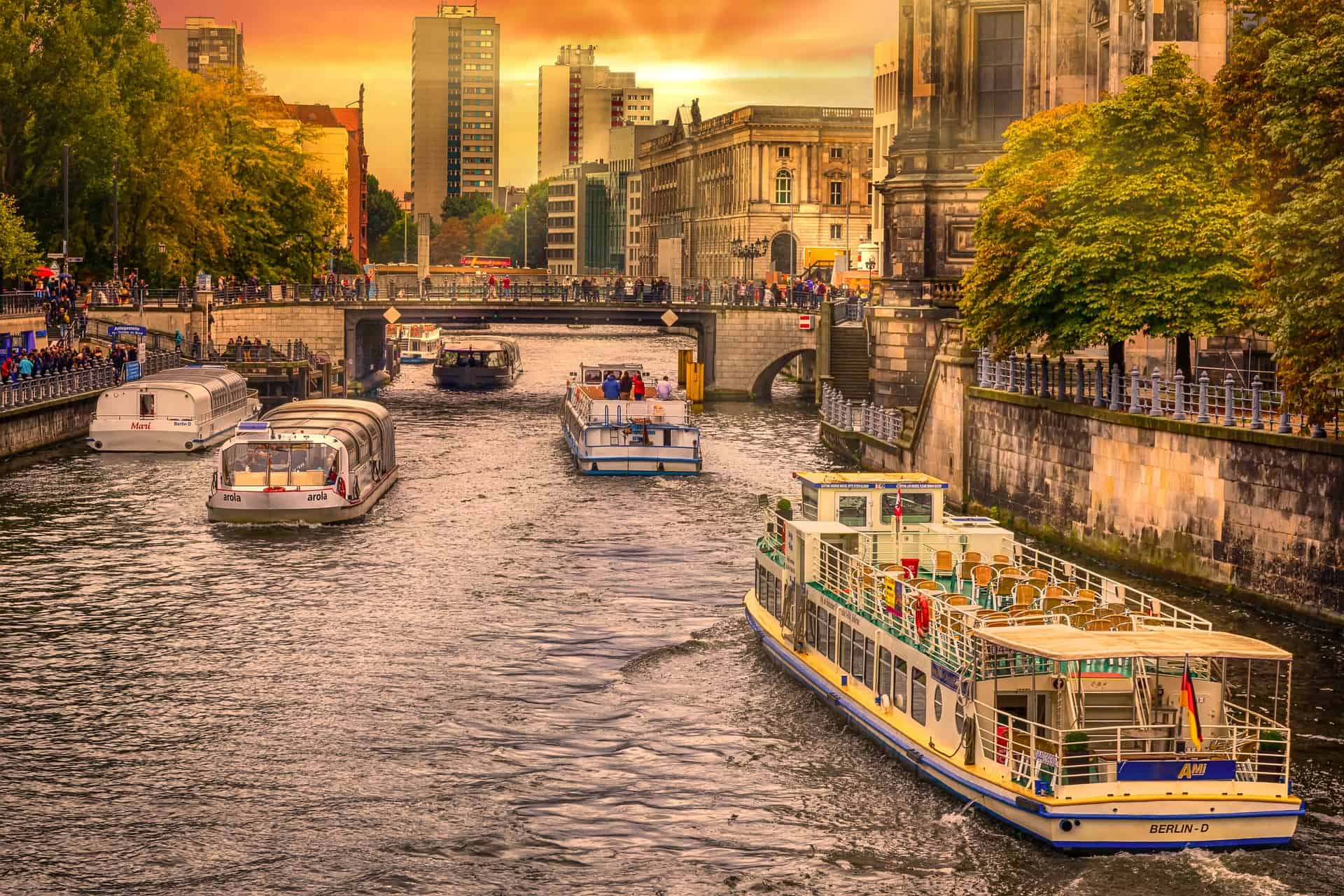
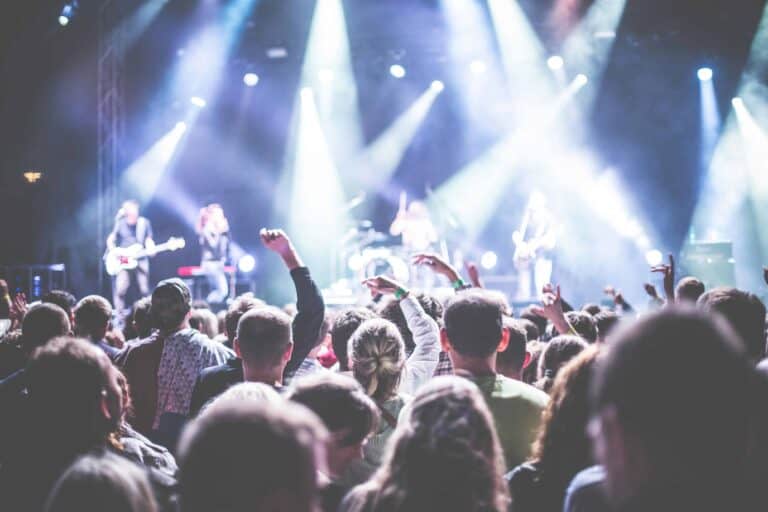
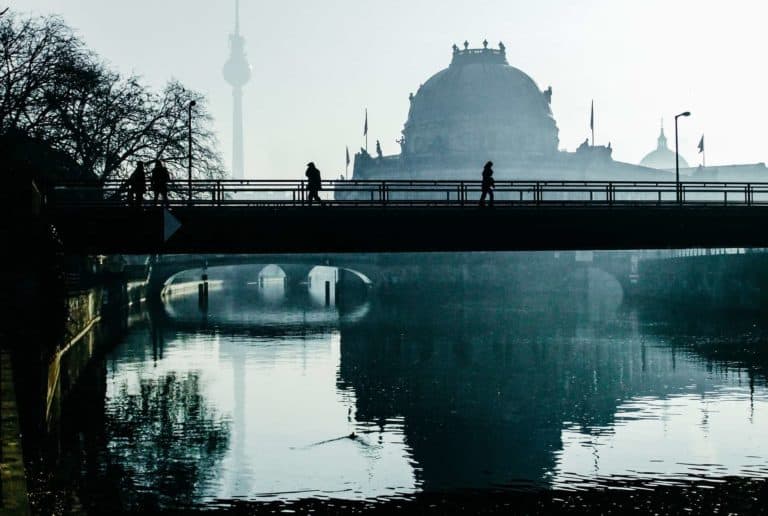
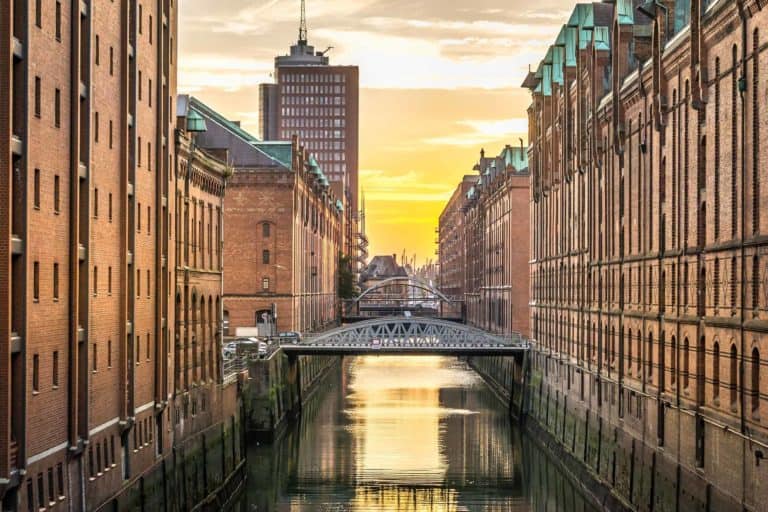
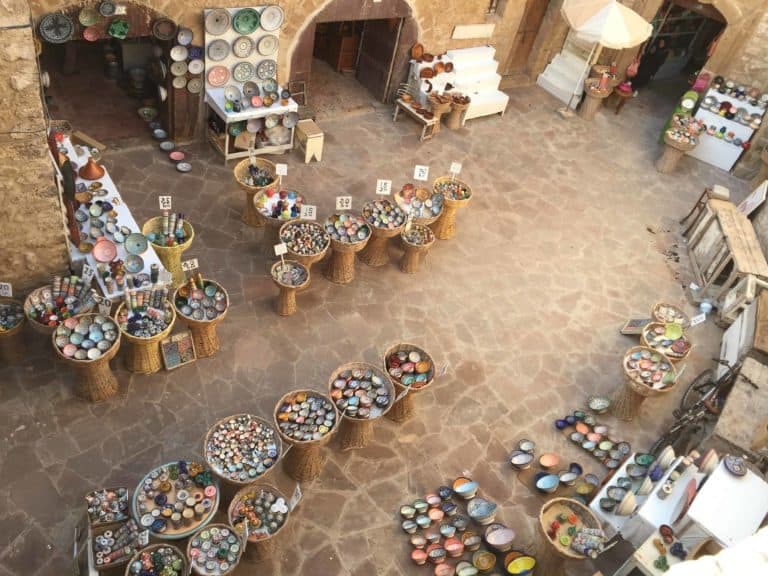
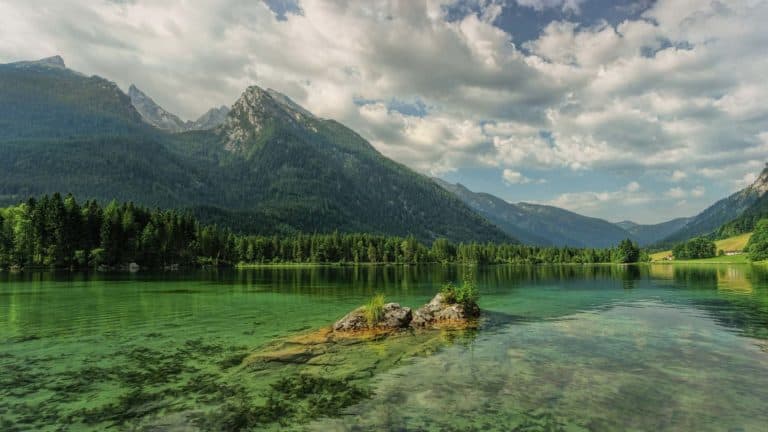
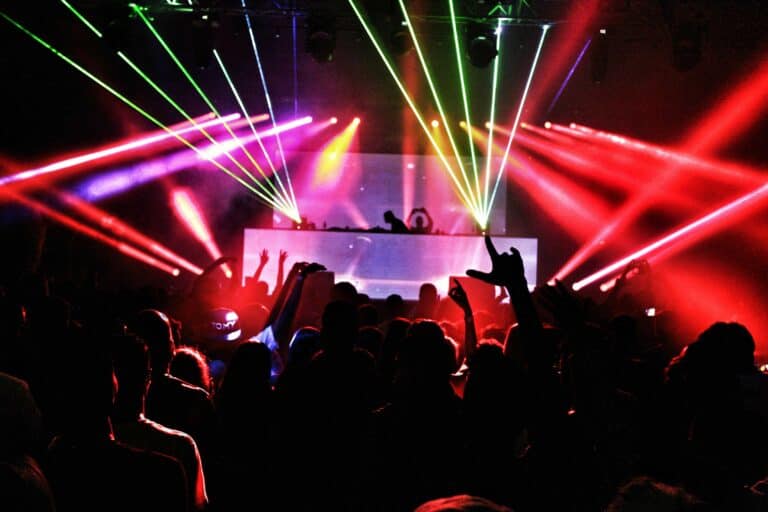
3 Comments